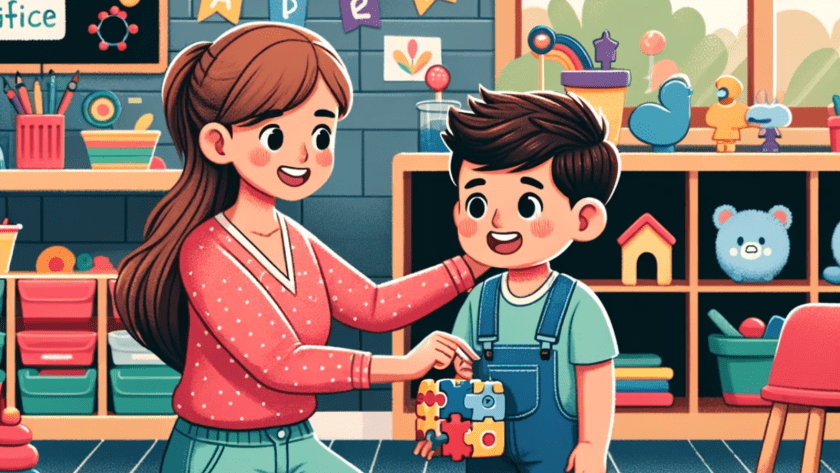Depending on their level of autism, some children only need minimal support to think, learn, problem-solve, and communicate. However, those in extremes may require intensive and highly skilled support to excel. Let’s learn how to support an autistic child through early childhood education.
Autism spectrum disorder is evidenced by a broad range of conditions with differing levels of severity. Most of these conditions are identified through various symptoms in babies and young children. These symptoms include challenged social skills and interactions, underdeveloped speech patterns, and a preference for non-verbal communication.
Autistic children also tend to engage in restricted or repetitive behaviors and interests that other children may consider boring. They also think and learn differently depending on their autism spectrum, ranging from mild to severe.
How To Support An Autistic Child Through Early Childhood Education
Early childhood education (ECE) is a fundamental learning stage that sets the pace for the next page in all chapters of the education journey. ECE is the learning and development that happens from when a child is born until they’re eight years old.
Formal and informal learning experiences during infancy and toddlerhood play a critical role in a child’s physical, emotional, and cognitive development. However, early childhood education is often affected by the various developmental challenges associated with autism.
Some common ways autism affects early childhood learning include the inability to concentrate due to a generalized lack of focus. Poor numerical problem-solving abilities and inability to communicate due to delayed language development also lead to weak learning outcomes in autistic children. However, an individual’s level of autism also affects the learning experience.
Let’s look at the different ways of supporting autistic children during their early childhood education.
Give A Lot Of Attention To Positive Behavior And Ignore Harmless Poor Behavior
An autistic child may have behavioral challenges that are not of their own making and might be considered problematic by other children and caretakers. For instance, some autistic children may yell when they feel overwhelmed. You can subtly disable poor but harmless mannerisms in the same breadth by not calling them out when this happens.
On the other hand, when an autistic child remains calm even when it’s evident they’re overwhelmed, showering them with excessive praise can enable more positive behavior.
Cultivate Patience When Teaching New Skills
It takes the autistic child a longer period to process new concepts and skills or respond to new instructions. To prevent burnout, which yields negative results, give the child enough time and space to process new information and react how you want them to. Avoid repeating your instructions because that may cause irritation and slow them down.
Use Play-Based Learning Activities
Whereas some autistic children often have challenges focusing, it’s different when they participate in fun and playful activities.
According to Jean Piaget, a child development psychologist, ‘play is the work of childhood.’ This also applies to children on the autism spectrum. You can help build an autistic child’s concentration skills by engaging them in activities that interest them.
Minimize Sources Of Distractions
Unnatural sensory stimuli such as brightly colored displays, fluorescent lights, and buzzing sounds easily overwhelm and distract autistic children. Therefore, when teaching autistic children, it would be best to try eliminating or limiting distractions as much as possible to help them pay attention.
Use Few Words And Even Voice Tone
Giving too many directions simultaneously to an autistic child is counter-productive because it frustrates them. To avoid this, give instructions using short, clear verbal statements and only share one point. Also, use a neutral tone of voice.
Set Clear Expectations And Boundaries
Since children on the autism spectrum thrive on predictability, implement routines at school and home and ensure adherence. A predictable classroom or outdoor environment provides a feeling of safety to the child, enhancing their learning capacity.
Solid classroom routines create order while providing the necessary structure that makes it easy for the autistic child to transition easily from one activity to another with minimal resistance. Some classroom routines can include morning and after lunch roll calls, story times, and timers to indicate they’re transitioning to the next activity.
Guide Using Picture Checklists And Visuals
Visual demonstrations and picture lists make for effective teaching aids for most autistic children who tend to have language challenges. Visual demonstrations such as gestures, objects, and pictures make it easy to process your instructions and help them understand the lessons better.
You can also consider autism flashcards to help them attach emotions to words, which helps them improve their social skills. For instance, you can use a chart demonstrating different emotions to help the child identify and express their feelings at any particular moment.
How To Support An Autistic Child Through Early Childhood Education
While autism inhibits some learning capabilities, an autistic child can still enjoy a positive and valuable early educational experience with the necessary support structures. A solid ECE foundation can help autistic children to unlock their full potential.
If you’re seeking early learning support for an autistic child, consider an environment that caters to their unique needs. Consider a facility whose educational programs and activities facilitate learning at a pace they can comfortably manage.
Finally, consider the professional qualifications of the facility’s educators. Ensure they are skilled and experienced enough to handle children with autism spectrum.



